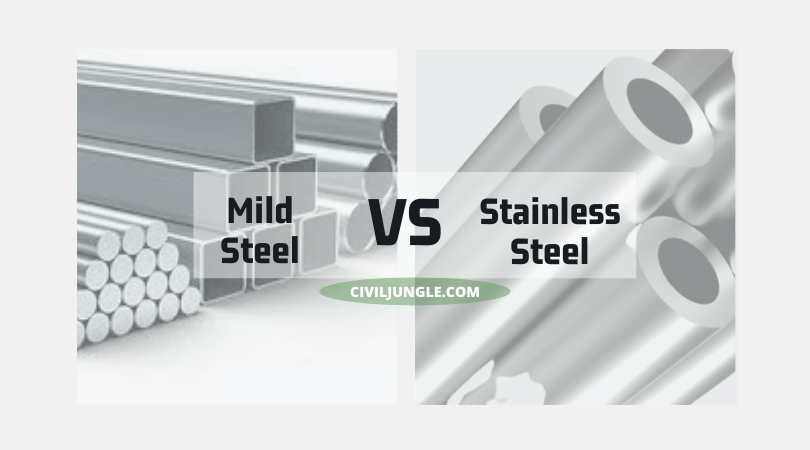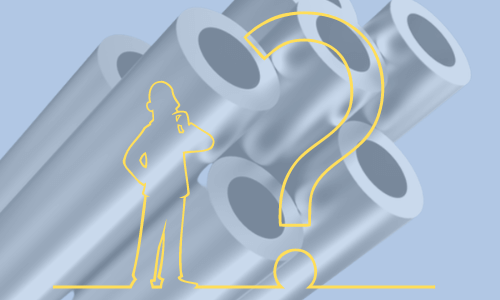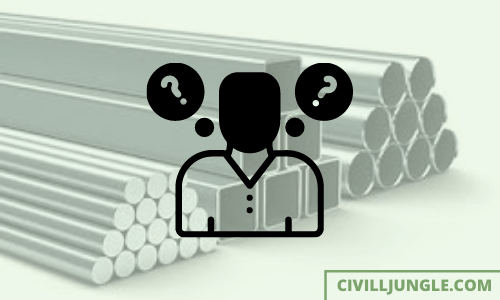What Is Stainless Steel?
Important Point
Stainless steel is the form a steel alloy with a chromium content of 11.5 percent by weight. Owing to the sufficient amount of chromium in stainless steel, the steel product doesn’t often rust, scratch nor corrode.
Probably due to this function, the specific type of steel is known as corrosion-resistant steel. In addition, stainless steel is widely used in cutlery, watch belts, etc.
You may also find various types of this steel on the market for a different reason.
What Is Mild Steel?
Mild steel has been a form of carbon steel that mostly contains a low carbon content. Mild steel, better known as low carbon steel, produces about between 0.05 and 0.25 percent of carbon by weight.
Because it is not alloy steel, and that it doesn’t contain significant quantities of anything except iron and ferrite.
Also, Read: How to Calculate Slab Steel Quantity from Drawing | BBS of Slab
Mild Steel Properties:
Here, the properties of milf steel are as follows.
- Both forms of carbon steels are typically classified on the basis of the amount of carbon they produce.
- Magnetic property which is attributable to the high quantities of ferrite and iron in mild steel bars.
- Inexpensive the use of mild steel is comparatively cost-effective compared to some other steels.
- Ductile property is much more ductile relative to other forms of steel and can thus be used for a wide range of purposes.
- Weldable because of its low carbon content, it is much more malleable and ideal for welding. Less the carbon in the steel, the more weldable and functional it gets.
- Relatively little carbon which makes cold-forming mild steel smoother and easier to manage as a whole.
Carbon Steel Properties
The three key types of carbon steel have varying degrees of carbon content and can also be used for different purposes.
- Low carbon steel (up to 0.30 percent pure carbon) is primarily used for flat-rolled steel items such as pipes, stripes, or light and rolled parts such as equal-angle or uneven-angle steel beams.
- Mid-carbon steel (between 0.30 per cent-0.60 percent carbon content) is favoured in the engineering industry, primarily used for wheels, tracks, gears, and vehicle parts.
- High carbon steel (0.60 percent to 1% carbon) is the best of the three carbon steels.
Difference Between Mild Steel and Stainless Steel:
Here, the difference between mild steel and stainless steel are as follows.
- The brittle design of mild steel is greater like that of stainless steel.
- Compared to mild steel, stainless steel is more resistant to corrosion.
- There is a risk that mild steel will improve. But once the stainless steel is formed, it cannot be modified or made any stronger.
- The qualities of malleability and toughness are much mild steel than stainless steel.
- The quantity of chromium in stainless steel is more than mild steel. So it looks a lot more appealing than mild steel.
- Steel is perhaps the most flexible, widely used building material. Mild steel and stainless steel are both types of steel.
- Mild steel is often considered as low carbon steel, carbon steel, or soft steel. Various types of mild steel are present on the market, including low alloy steel, high alloy steel, medium carbon steel, high carbon steel, etc.
- Mild steel includes iron and carbon as the primary ingredients. It includes other elements in limited amounts such as nickel, chromium, aluminum, phosphorous, sulfur, silicon, etc. however the carbon content varies from that of mild steel.
- Though stainless steel is sometimes identified as INOX steel or INOX. There are much more around 150 types of stainless steel commercially available, among which 15 are perhaps the most widely used stainless steels featuring iron and chromium as primary components apart from this.
- Includes other components in limited amounts such as carbon nickel, copper, silicon nitrogen, manganese, molybdenum, etc. however the chromium content varies from that of stainless steel.
- Mild steel isn’t really rust-resistant. It rusts easily and fast. The iron found in mild steel combines with moisture in the air which creates iron oxide, which is often called rust. Mild steel also needs more refining, including galvanizing or coating, in terms of giving it a safe coat.
- Stainless steel, but at the other side, doesn’t really rust readily. Chromium stops iron against oxidizing, hence it is mixed. This prevents rust and corrosion of Steel which provides Steel corrosion-resistant properties.
- Chromium within stainless steel responds to oxygen in the atmosphere and creates chromium oxide, a safe layer mostly on the surface of the metal that stops iron from oxidizing.
- The metal can be inherently corrosion resistant as often as its coating is structurally sound. Even so, this is not completely corrosion-resistant, particularly under conditions such as a high concentration of salt water.
- The durability of mild steel is less than that of stainless steel.
- While the stainless steel quality is much more than light steel.
- The Need for a substance to experience plastic deformation despite cracking or fracturing. Mild steel does have a low carbon content and is thus quite brittle, so it should be used in the manufacture of pipe and pipe fittings.
- While stainless steel becomes less ductile than mild steel.
- The toughness of mild steel is far less than stainless steel.
- But while stainless steel incorporates chromium, the strength of stainless steel is much more than mild steel.
- It’s called hard stuff. The durability of mild steel is much less than stainless steel.
- While the strength of stainless steel will be more than light steel.
- Mild steel is less fragile than stainless steel.
- But while stainless steel is more fragile than mild steel.
- Mild steel is usually sliced by bent, twisted, stabbed, pounded, forged, and rolled. Mild steel is simpler to work with than stainless steel.
- So while stainless steel may not be as easy to produce as mild steel. It is impossible to produce stainless steel without the use of advanced technology equipment and the required methodology.
- Mild steel welding is faster than stainless steel welding.
- While other stainless steel provides poor weldability when welding stainless steel, it changes shape and requires a highly professional and qualified welder.
- This indicates that quickly a material may show magnetic effects once exposed to a magnetic field mild steel could be strongly magnetized whenever there is a high volume of iron present mild steel becomes ferromagnetic, in all other words, mild steel is easily targeted to such a magnetic field.
- Besides this, Stainless Steel cannot be magnetized. Ferritic magnetic steels are normally magnetic, whereas austenitic steels are typically magnetic or not.
- That is the capacity which steel is being hammered or pounded into form before fracturing as well as cracking mild steel is also much more malleable relative to stainless steel that is used in a lot of general industrial work.
- But while stainless steel is less malleable than mild steel.
- Performance, relative to stainless steel, is not appealing.
- In comparison to the mild steel stainless steel, the silver-white Shiny look is very appealing.
- Mild steel is hard to clean and preserve relative to stainless steel.
- Mild steel is being used in the type of rolled parts for the reinforcement of bar roofs, shielding sheets of stack rail tracks angle Bolt rivets sheets, etc., which are commonly used during electric and electrical equipment.
- Because of its corrosion resistance, stainless steel is ideal for the harsh climate. Stainless steel is commonly used during the manufacture of domestic cutlery for staircase and courtyard barbecues for window vessels for storage of acid pipes Dairy Pharmacy devices, etc. Their absolute insolubility as well as the Finish standard of preservation often makes them ideal in surgical instruments.
- Mild steel existence is shorter than stainless steel.
- So while stainless steel existence is more like mild steel according to corrosion resistance.
- The expense of finished coating of mild steel is smaller than that of stainless steel.
- While the finishing operations expense of stainless steel is large.
Also, Read: 10 Best Steel Brand for House Construction in India
Stainless Steel Vs Mild Steel.
Mild steel contains carbon as the alloy, whereas stainless steel includes chromium. The changes brought about by chromium to the internal structure of the steel result in properties which gives stainless steel its name: very high corrosion resistance and a surface which does not stain or tarnish
What Is MS Steel?
Mild steel is a type of carbon steel with a low amount of carbon. It is actually also known as “low carbon steel.”
What Is Stainless Steel?
Stainless steel is a group of iron-based alloys that contain a minimum of approximately 11% chromium, a composition that prevents the iron from rusting and also provides heat-resistant properties.
Also, Read: What Is Rebar | Why use Reinforcement in Concrete | Types of Steel Reinforcement Bars
MS Steel Means.
Mild steel is a type of carbon steel with a low amount of carbon – it is actually also known as “low carbon steel.” Although ranges vary depending on the source, the amount of carbon typically found in mild steel is 0.05% to 0.25% by weight, whereas higher carbon steels are typically described as having a carbon
Stainless Steel Means.
Stainless steel is a group of iron-based alloys that contain a minimum of approximately 11% chromium, a composition that prevents the iron from rusting and also provides heat-resistant properties.
Difference Between Mild Steel and Stainless Steel.
Mild steel contains carbon as the alloy, whereas stainless steel includes chromium. The changes brought about by chromium to the internal structure of the steel result in properties which gives stainless steel its name: very high corrosion resistance and a surface which does not stain or tarnish.
Like this post? Share it with your friends!
Suggested Read –
- What Is Dressing of Stone | Types of Dressing of Stone
- Alignment of Road | Alignment In Design | Horizontal Alignment of Road | Vertical Alignment of Road
- What Is Auxiliary Plane | Types of Auxiliary Plane | Types of Auxiliary View | How to Draw Auxiliary View | Drawing Steps for Auxiliary View
- Well Point System | Types of Well Point System | Well Point Dewatering | PVC Well Point | Well Point Installation | Well Point for Shallow Well
- What Is a Cavity Wall | How to Build a Cavity Wall | Cavity Wall Detail | Cavity Wall Thickness | Cavity Wall Insulation Pros and Cons | Brick Cavity Wall
Originally posted 2021-02-06 14:48:24.




Leave a Reply